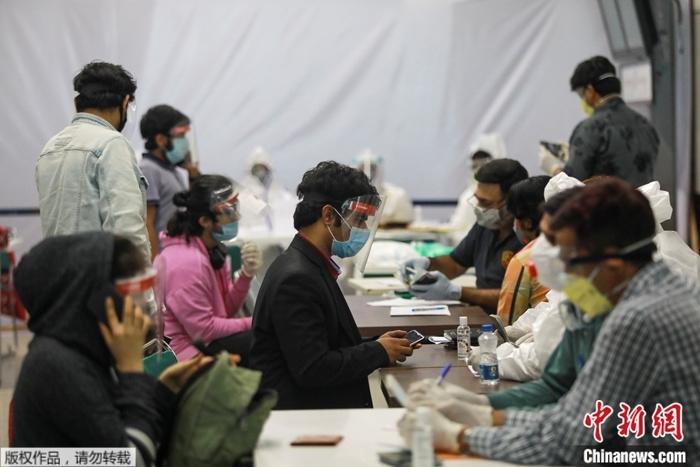China News reported on May 12th that under the impact of the epidemic, the unemployment rate in India has soared rapidly. India ’s national blockade measures are about to expire on the 17th. Indian Prime Minister Modi held a video conference with provincial governors on the 11th to exchange views on the next stage of the blockade, gradually relaxing restrictions on economic activities and other issues. .
In order to save the economy, the Indian Central Government hopes to gradually relax economic activities. The Indian Railway Company issued a statement on the evening of the 10th local time to announce that the train will gradually resume operation from the 12th, and the road operation will also be gradually prepared to resume. Even air traffic is also considered to be phased after 17 restore.
Data map: India under the epidemic.
However, the epidemic situation in India continues to be severe. As of now, more than 60,000 cases have been diagnosed in India.
According to reports, many provincial governors in India still support the continuation of the strict blockade policy. Many provincial governors warned that if the train resumes operation, it will make isolation and screening for suspicious cases and other epidemic prevention and control work more difficult, which may lead to local chaos.
Recommend to Modi that the provinces should adopt different degrees of relaxation of economic activities according to the green, orange and red areas divided by the central government to gradually strengthen the economy. Some governors said that each province should have the right to determine and handle economic activities in their respective provinces, And bear the responsibility of declaring red, green and orange areas.
According to sources, the Indian central government currently prefers to relax some restrictions after the end of the national blockade on the 17th, but some restrictions will continue to be enforced and cannot be fully lifted.
In addition, because the national blockade led to the closure of most business activities, and the central government previously prohibited the sale of alcohol, the closure of the store also made the province ’s largest source of alcohol tax revenue zero, which severely hit the province ’s finances, and many governors also demanded that the central government be repaid The timing of debt should be rescheduled.
After implementing a blockade to curb the spread of the new crown virus, India's unemployment rate soared.
According to data from the Indian Economic Monitoring Center (CMIE), the unemployment rate in India is currently at a record high of 27.1%. In April alone, 122 million Indians were unemployed. But the authorities faced a dilemma in fighting the epidemic and saving the economy.
Since March 25, India has been in a state of blockade, resulting in large-scale layoffs and massive unemployment. After entering April, the unemployment rate in India reached 23.5%, a significant increase from 8.7% in March. The epidemic blockade has brought most economic activities to a standstill.
Large companies in various industries such as Indian media, aviation, retail, hotels, and automobiles have announced large-scale layoffs in recent weeks. Experts predict that many SMEs may be completely closed.
CMIE CEO Mahesh Vias stated that India must weigh the economic costs of its epidemic blockade.
At present, the Indian government has begun to relax restrictions on certain areas or areas with low reported infection rates, and strict curfews are still imposed in those areas where more cases of infection are found.
Vias said that partition processing is a good starting point, but the time cannot be too long. Because various regions of India cannot operate as if they were on isolated islands. People, goods and services need mobility. The supply chain needs to start operating before the company loses liquidity.

